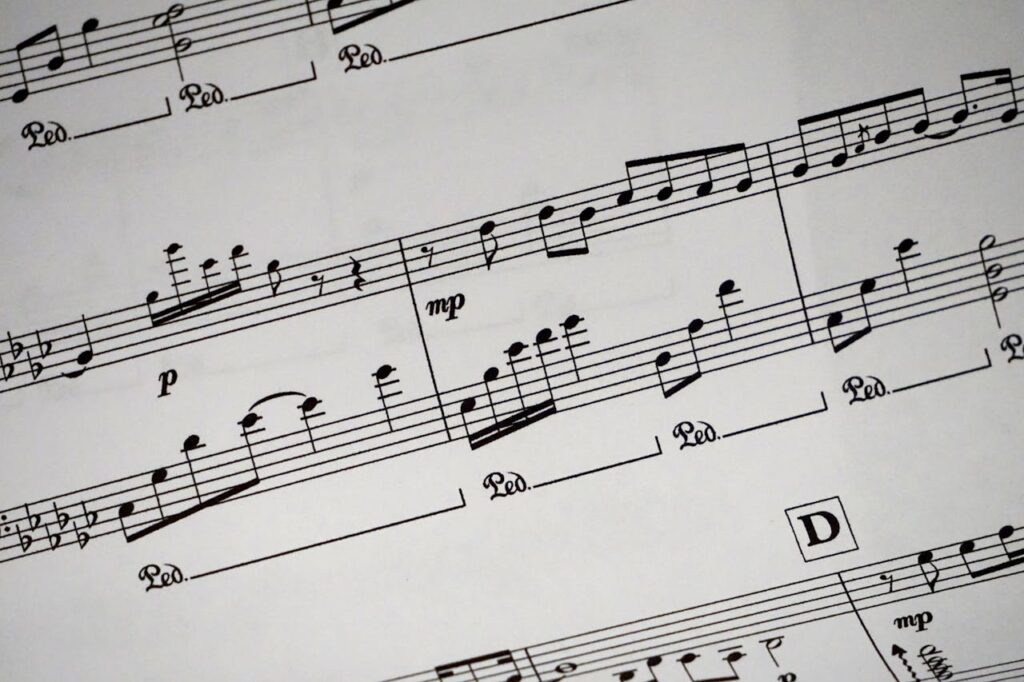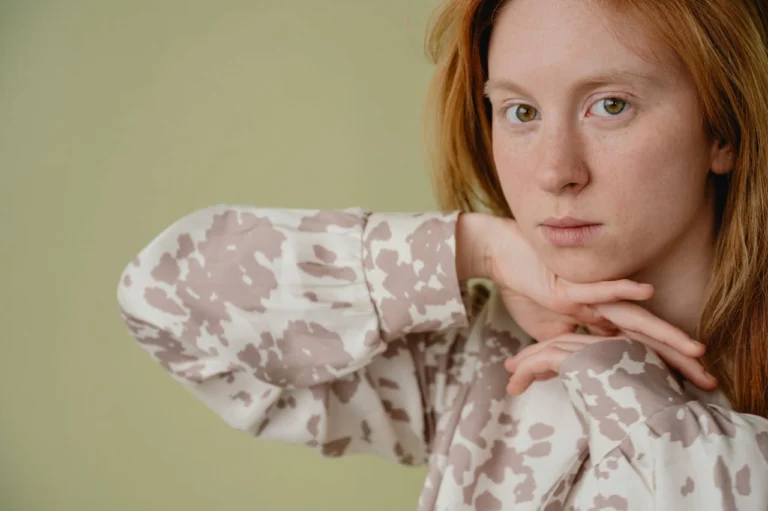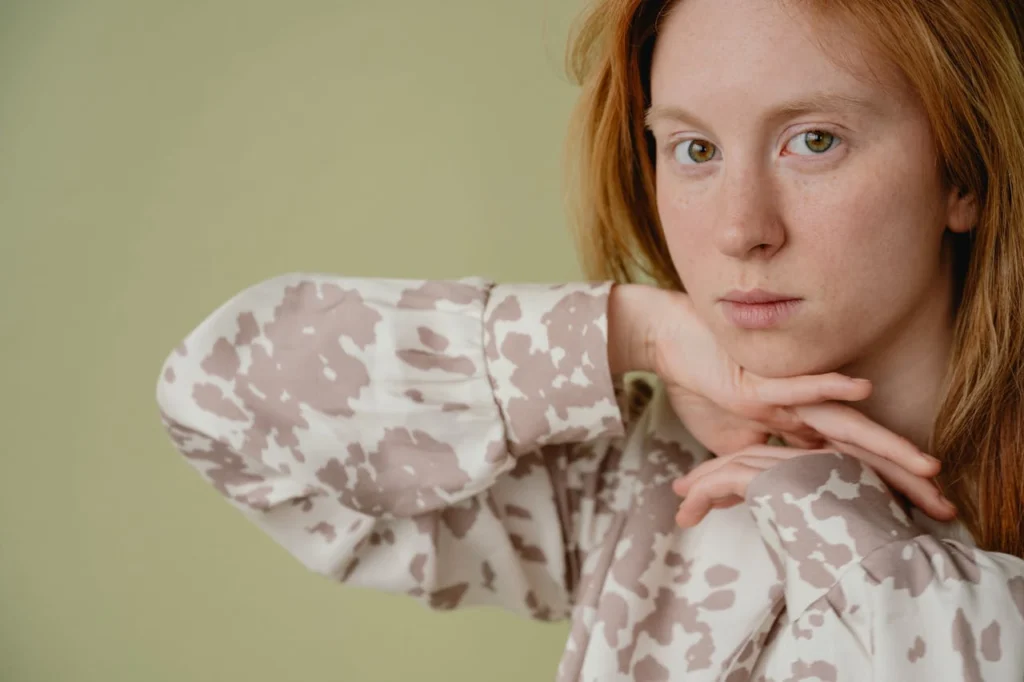Music therapy isn’t just about listening to your favorite songs or softly humming a tune. It’s a clinical, evidence-based approach that uses music for healing and growth, especially for those carrying deep layers of stress, old wounds, or trauma that can’t be spoken aloud. For many, it feels richer and more supportive than traditional talk therapy, because music gives us another language, one that can hold our feelings and memories when words fall short.
In music therapy, each person’s journey is shaped to fit their needs and backgrounds. Sessions are creative, safe, and nonjudgmental, so we can explore what truly matters in ways that feel nourishing, not forced. If you’ve ever sensed that music moves something inside you that simple conversation cannot, you’re in the right place. This article takes you through what music therapy is, why it works so deeply, and how it might support your healing or growth, whether you’re new to therapy or looking for a more creative path.
Understanding Music Therapy: Definition and Core Principles
Music therapy is a recognized clinical profession where trained music therapists use music intentionally to support clients’ health and well-being. This isn’t just picking playlists or casual listening; it’s an evidence-based approach rooted in science and experience. Qualified music therapists design every session with individualized goals focused on emotional, physical, cognitive, or social needs. Sessions may involve creating, playing, or just listening to music, but always in a safe, structured space with real-life impact.
What makes music therapy unique is the level of collaboration and respect for each person’s wisdom and lived experience. Instead of imposing a fixed plan, therapists partner with clients, honoring their preferences, cultural backgrounds, and ways of engaging with music. This lets healing unfold at a pace that feels right, even when facing anxiety, trauma, or deep-seated patterns. It’s supportive for those who want to explore inner landscapes, regulate emotions, find new ways to communicate, or simply feel less alone.
Music therapy is distinct from general music activities because it always centers on a therapeutic relationship with a credentialed professional. When we talk about creative arts and music therapy, we’re describing an intentionally structured process, one that invites the whole person into the room, using music as both anchor and guide beyond what’s possible with words alone.
Music Therapy History and Key Models
The roots of music therapy stretch way back, think shamans and ancient healers using song and rhythm to ease pain and lift spirits. Modern music therapy, as we know it, grew up in hospitals after World War II, supporting veterans wrestling with trauma and physical injuries. From there, it kept evolving, shaped by new science and lived experience.
Several influential approaches guide today’s practice. The Nordoff-Robbins model values improvisation and creative expression as healing forces. The Bonny Method of Guided Imagery and Music uses music to help people explore their inner worlds and heal deep wounds. Each model brings its own perspective, making music therapy a field rich with variation, insight, and flexibility.
Music Therapy Versus Therapeutic Music: Knowing the Difference
It’s easy to mix up music therapy with just “using music for wellness,” but they are different. Therapeutic music, like playing calming playlists at home, can be relaxing and sometimes meaningful, but it isn’t clinical music therapy. Music therapy always involves a qualified music therapist, specific goals, and a structure aimed at lasting change.
In music therapy, the music is shaped to meet you where you are, including your history, hopes, and challenges. It’s a safe, intentional process designed for healing especially when sensitive topics or complex emotions are in play. If you’ve ever wondered whether you could “just listen to music” to feel better versus working with a therapist, the answer lies in safety, purpose, and depth, a music therapist is trained to hold that container when life feels especially tough.
How Music Therapy Works: Active and Receptive Approaches
Music therapy is much more than just tuning into background music or quietly humming to yourself. At its heart, music therapy recognizes that there are different ways we connect with music, and that each person will come at it from their own angle. Sometimes, we crave hands-on experiences, like making music ourselves. Other times, sitting back and listening with intention is exactly what soothes our nerves or sparks reflection.
That’s where the two main approaches come in: active and receptive music therapy. One style encourages us to dive in, get creative, and physically engage with the sounds, while the other invites us to listen deeply, notice our responses, or simply rest in the music. Both can offer incredible insight, comfort, or grounding, depending on our comfort level, mood, and needs in that moment.
Whether you’re drawn to move, sing, play, or just listen and reflect, music therapy is all about honoring your unique way of healing. As we explore these two approaches more closely, you might find yourself thinking about which might support you, or if you want to try a mix of both.

Active Participation in Music Therapy
Active music therapy is just what it sounds like, getting involved with music in hands-on, expressive ways. This might look like improvising short melodies, strumming a guitar, tapping a drum, singing, or co-writing song lyrics with your therapist. You don’t need to play an instrument or “be musical.” It’s about the act of creating, exploring, and moving with sound in the moment.
By making music together, we give our emotions a voice, release physical tension, and discover parts of ourselves that are hard to reach through talk alone. There’s a freedom here that often leads to moments of insight or relief, even laughter or joy, no matter your skill level.
Receptive Music Therapy: The Power of Listening
Receptive music therapy focuses on intentional listening. Here, music becomes a holding environment for reflection, imagery, or relaxation, sometimes paired with gentle guidance or simple breathing techniques. Your therapist might offer carefully selected pieces to match your needs or invite you to notice what arises as you listen.
This approach is especially supportive when you’re carrying grief, anxiety, or feelings that don’t have easy words. Even when the music is quiet and simple, it can anchor you, help process memories, or offer a sense of calm that lasts beyond the session. Sometimes, just listening is the kindest thing you can do for yourself.
Common Music Therapy Techniques and Clinical Tools
- Improvisation: Playing instruments or singing freely with a therapist helps us tap into emotions, test boundaries, and safely explore new ways of being. No experience needed, these moments are about feeling, not perfection.
- Songwriting: Creating original songs or rewriting lyrics lets us tell our stories, process life changes, or honor hopes and pain with words and melody. It’s a way to shape our experience into something lasting.
- Lyric Analysis: Listening to songs, discussing lyrics, and reflecting on what resonates gives us a voice for feelings that can be hard to name. It can be powerful to see ourselves in another’s words, making connections between music and life.
- Guided Relaxation with Music: Using calming playlists, soft sounds, or live instrumentals, we can practice relaxation or imagery exercises. These techniques ground the body, ease muscle tension, and support emotional regulation, especially during stress or overwhelm.
- Drumming and Rhythm-Based Activities: Group or solo drumming channels energy, helps regulate physical rhythms, and strengthens connection, great for working through agitation, anger, or simply to find a steady anchor.
Music Therapy Assessment and How Sessions Are Structured
Starting music therapy isn’t a shot in the dark. We begin by getting to know each person’s story, needs, and what feels safe. The assessment process includes listening to your musical background, talking about your goals, and maybe trying out a few activities to see what feels comfortable.
Based on this, the therapist helps co-create a plan, always shaped by your input, pace, and comfort levels. Sessions might have a routine structure or adjust week-to-week, depending on what you’re facing. The aim is to keep things flexible, safe, and truly supportive, for both new clients and those with lots of therapy experience.
Who Can Benefit from Music Therapy?
Music therapy’s beauty is its flexibility, it meets people exactly where they are, across ages, backgrounds, and experiences. Some folks seek it out for help with overwhelming emotions, stress, or a need for creative connection. Others come after a big life event, a diagnosis, trauma, or simply being stuck in unhelpful patterns. No matter the reason, music therapy welcomes everyone.
We see children, teens, adults, and older adults benefit from this approach. Some people are drawn for support with mental health, like anxiety or depression. Others arrive because of neurological changes, chronic illness, or a desire to process grief or life transitions in a new way. The following sections will give more concrete examples, but the main point is that music therapy is truly for everyone looking for gentle, creative, evidence-backed support.
Music Therapy for Children, Teens, and Autism
- Builds communication, social skills, and confidence in children and teens, especially those on the autism spectrum, a finding supported by a 2022 systematic review on music therapy’s effectiveness in ASD (Ke et al., 2022).
- Uses play, rhythm, and creative movement to help with emotional regulation and frustration tolerance.
- Sessions can be individual or in groups, always tailored to each child’s pace and needs, with plenty of room for self-expression and fun. For more, see music therapy for children and music therapy for autism approaches that center trauma-informed, neurodivergent-affirming care.
Music Therapy for Military and Trauma Survivors
- Offers a safe place to process PTSD, brain injury, or complex trauma, with music as the anchor for trust and emotional safety.
- Therapy moves at your pace, sessions honor your readiness, boundaries, and history, never forcing you to relive tough memories before you’re prepared.
- Supports veterans and trauma survivors in reconnecting with feelings, managing anxiety, and finding meaning and hope again, even when words are out of reach.
Music Therapy for Neurological Disorders and Older Adults
- Helps people with Parkinson’s, Alzheimer’s, stroke, or brain injuries hold onto memory, speech, and physical skills through music-based activity.
- Uses guided rhythm, singing, and reminiscence to spark engagement, comfort, or conversation, often lifting mood and reducing confusion or agitation.
- Adaptive music interventions meet each person’s strengths and needs, supporting dignity and quality of life for both clients and their families.
Mental Health and Emotional Well-Being Through Music Therapy
Lots of us wrestle with depression, anxiety, or grief, at times it can feel overwhelming or impossible to put into words. That’s where music therapy comes in. It offers tools not just for coping, but for deeper healing, using sound to ease pain and open space for lightness, connection, and hope. Music holds space for feelings we can’t always explain, gently helping us move through stuck places or long-held sadness.
Each of the following sections will dive into specifics, like how music therapy lights a path out of depression, offers rest for anxious minds, or helps us process loss when nothing else seems to work. No challenge is too small or too big, with support, creative approaches, and a safe space, we can all move toward feeling more whole.
Music Therapy for Depression and Mood Disorders
Music therapy gives us a new way to approach depression that doesn’t rely on words alone. Through songwriting, improvisation, or letting music reflect our mood, we can express and shift burdens that feel too heavy. This process supports emotional regulation, helping us move from numbness or overwhelm into hope, curiosity, or even joy over time.
Together with a therapist, we explore music that resonates and techniques that gently build resilience. The focus is always on empowering you, finding what lifts your spirit and grieving at your own pace, without pressure or judgment.
Using Receptive Music Therapy for Insomnia and Anxiety
Music therapy isn’t just about creativity, it’s about soothing the nervous system. For chronic anxiety and sleeplessness, creating personalized music playlists with a therapist can help cue the body to slow down and rest. Gentle rhythms or repetitive sounds signal safety, easing the heart rate and making it possible to settle the mind for sleep.
By working intentionally with sound and breath, clients with insomnia or anxiety often find new ways to regulate emotions and restore balance, even when daily stress is at its peak. Listening becomes a tool you can bring home whenever you need it most.
Supporting Grief and Emotional Expression with Music Therapy
When words aren’t enough for big losses or transitions, music therapy offers a safe container to remember, honor, and process grief. Guided listening, collaborative songwriting, or simply sitting quietly with emotional music gives structure to feelings that can otherwise feel overwhelming or scattered.
This approach respects each person’s timeline and needs, bringing compassion to the intensity of grief while making space to slowly shift and find new meaning through the music.
Physical and Medical Benefits: Pain, Cancer Support, and Beyond
Music therapy doesn’t stop at emotional healing, it brings science-backed support into medical settings too. Research and experience show that making or listening to music can manage pain and ease distress for people facing cancer, a finding also supported by a 2024 randomized controlled trial on music therapy for advanced cancer pain (Bradt et al., 2024) These benefits aren’t only “nice-to-haves”, for many people, music therapy is an essential part of living better with chronic illness or ongoing health challenges.
Each of the next sections will share how music shapes the journey through pain, cancer, and neurological recovery, always with an individualized touch, never a one-size-fits-all approach. Whether you’re recovering, coping, or just wanting to feel stronger, there’s a way music can support you.
How Music Therapy Supports Pain Management
Music therapy offers proven ways to refocus attention, decrease the intensity of pain, and create micro-moments of relaxation, even during tough medical treatments. Through guided listening or active participation, the experience distracts the mind while empowering us with tools for coping, like controlled breathing, imagery, or rhythmic movement that releases muscle tension.
This can be life-changing for those living with chronic or acute pain, providing comfort and making daily routines much more manageable.
Music Therapy for Cancer Care and Healing
Cancer journeys are overwhelming, physically and emotionally. Music therapy offers comfort and stability during treatment, helping to process fear, loss, or pain through music that is both grounding and uplifting. Creative activities and live music can reduce anxiety, make medical procedures less frightening, and help families connect in ways that words can’t capture.
Sessions are always tailored, whether someone needs energy for the day, a quiet place to grieve, or a moment of hope. Music therapy also integrates with palliative care, focusing on dignity and emotional presence until the very end.
Recovery and Motor Skills: Neurological Disorders and Music Therapy
For folks recovering from stroke or managing conditions like Parkinson’s or dementia, music therapy offers practical pathways to regain movement, speech, and memory. Rhythmic auditory stimulation uses steady beats to help retrain the brain, improving gait or hand coordination. Singing or memory-based activities trigger recall and conversation, helping people feel more engaged and less isolated.
These approaches aren’t just clinical, they’re lifelines for many living with neurological challenges, giving back pieces of identity and connection one note at a time.
The Science Behind Music Therapy: How Music Affects the Brain and Body
It’s not just a hunch, there’s real science showing how music lights up the brain and soothes the body. Clinical research reveals that music can actually reshape our brain circuits, regulate emotions, and spark hope during tough times. By working with both rhythm and melody, therapists help rewire patterns linked to anxiety, pain perception, and even memory loss.
This next section will translate scientific findings into everyday terms, so you’ll understand how music therapy uses these effects to support emotional, physical, and cognitive healing. If you’re curious about why music feels uplifting, calming, or transformational, even when words fail you, read on as we break down the “how” beneath the surface.
Neurological Impact: Music, Emotion, and Cognition
Music activates multiple parts of the brain at once. When we hear a song, areas tied to memory, movement, and emotion light up, from the hippocampus to the amygdala. This is why one familiar chorus can bring back a whole childhood or trigger an unexpected laugh or tear.
Therapists use this power to stimulate speech, help us process feelings, and support cognitive functions, especially for people with neurological challenges or who struggle with words alone.
Physiological Benefits: Music and the Stress Response
Music isn’t just mental, it has real effects on the body. The steady beat in songs can slow down heart rate, sync up breathing, and lower stress hormones like cortisol, a pattern supported by a 2013 PLOS ONE study on music and the human stress response (Thoma et al., 2013). This means music therapy can pull us out of “fight or flight” and help us feel safe, calm, and focused in our own skin again.
Clients often say they feel more relaxed and less tense after a session, now we know, that’s biology in action, not just a happy accident.
Benefits, Risks, and How to Access Music Therapy
Music therapy brings powerful benefits, supporting body, mind, and spirit, whether you’re after emotional resilience, relief from pain, or stronger connections with others. Even so, it’s important to recognize possible challenges and know how to find professional, trauma-informed care that truly meets your needs. Not every approach or method fits every person, and that’s part of what makes therapy so personalized and safe.
The next sections will map out the broad advantages of music therapy, discuss risks and ethical care, and walk you through practical steps for getting started. If you’re wondering where or how to access services, or whether your experience “fits the mold,” you’re not alone.
Comprehensive Benefits of Music Therapy for Mind and Body
- Emotional safety: Music creates a supportive environment for exploring tough feelings without judgment.
- Self-regulation: Techniques used in music therapy help manage anxiety, depression, and stress day-to-day.
- Pain relief: Rhythmic and melodic interventions can reduce pain intensity and empower personal coping.
- Social connection: Making and sharing music can break isolation, build confidence, and nurture hope.
- Cognitive support: Music therapy enhances memory, attention, and daily functioning, crucial for people with neurological changes or aging challenges.
Music Therapy Risks and Considerations
- Emotional triggers: Certain songs or activities can unexpectedly bring up strong feelings, especially trauma; a trained therapist guides the process for safety.
- Contraindications: Rare medical or psychological situations may require alternate approaches or close coordination with other health professionals.
- Personalization: One size doesn’t fit all; sessions should be adapted for culture, comfort, and background.
- Boundaries: Ethical care means honoring pace and choice, never pushing through resistance or discomfort before ready.
Accessing Music Therapy
Starting music therapy is often as simple as reaching out to a board-certified music therapist in your state, or asking for referrals from your counselor or doctor. In Texas and New York, many therapists offer in-person or virtual sessions designed for your situation. Some programs accept insurance, and many provide superbills if you’re seeking out-of-network reimbursement.
You can learn more about accessing trauma-informed creative arts and music therapy in Austin and throughout Texas or New York by visiting or exploring Integrative Creative Therapy. Never hesitate to reach out with questions, it’s perfectly normal to want to know more before diving in.
Conclusion
Music therapy offers unique pathways to healing, beyond words, diagnoses, or checklists. Whether we’re seeking to ease pain, process loss, overcome anxiety, or just reconnect with our best selves, music therapy opens doors traditional talk therapy often cannot.
Through evidence-based strategies and heartfelt partnership, we can find safe haven, creative expression, and honest support. If you’re curious about next steps, don’t hesitate to ask a professional about music therapy options, and trust that music always meets you where you are, no matter your story or starting point. Healing, as it turns out, can begin with a single note.
Frequently Asked Questions
What’s the difference between music therapy and just listening to music at home?
Music therapy is led by a credentialed therapist with a specific plan for your needs. It goes beyond passive listening by shaping activities, responses, and emotional exploration together in a safe, supportive environment. The goal is targeted healing, growth, and change, not just comfort or relaxation.
Do I need to have any musical skill to benefit from music therapy?
No musical experience is required. Music therapy adapts to everyone, whether you’re a seasoned musician or have never touched an instrument. The focus is on the process, expression, and healing potential, not talent or performance.
Can music therapy help with anxiety, depression, or trauma?
Yes. Music therapy provides creative tools for managing anxiety and depression, finding calm, or processing trauma. Sessions are tailored to your comfort, with trauma-informed practices to ensure safety and the right pace for healing. Many find hope and relief when other methods feel stuck.
How do I find a music therapist near me?
Search for board-certified music therapists through local professional organizations or mental health directories. In Texas and New York, look for trauma-informed, client-centered practices with experience in creative arts modalities. Reach out for consultations to discuss your goals and make sure there’s a good fit for you.
References
- Ke, X., Dong, X., Zhao, Y., & Chen, X. (2022). Effectiveness of music therapy in children with autism spectrum disorder: A systematic review. Frontiers in Psychology.
- Rodgers-Melnick, S., Pearce, K., & Layman, E. (2024). Music therapy for pain management for people with advanced cancer: A randomized controlled trial. Psycho‐Oncology.
- Thoma, M. V., Ryf, S., Mohiyeddini, C., Ehlert, U., & Nater, U. M. (2013). The effect of music on the human stress response. PLOS ONE, 8(8), e70156.







